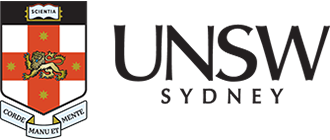Professor Elias Aboutanios
Radar technology: improving safety & quality of life for all

In almost every part of life, signals are used by humans to extract information and meaning. From communication to navigation – even visits to the doctor for an ECG – these experiences are influenced and informed by signals. Through the work of Professor Elias Aboutanios, of the UNSW School of Electrical Engineering and Telecommunications, signal and radar processing is being applied in new ways across a range of industries – from space to defence, health and beyond.
To assist defence departments with monitoring of terrain, Prof. Aboutanios and his team have worked on a number of innovative projects, including one which saw them place a radar on a high-altitude balloon. The balloon was scheduled for release into the atmosphere with the intention of capturing important live footage of various areas, however the mission was placed on hold due to COVID-19. “We are now looking at ways of picking up the project again, including a possible continuation through NATO, as it was a NATO-funded project conducted in partnership with The University of Pisa in Italy,” he explains.
“It would allow us to use science for both peace and security, and float above any war zone to send back live information to those monitoring the output back on the ground.”
The project has also seen the team place the same radar on a drone to help better detect landmines and improvised explosive devices. “The interest here has been from a tactical point of view because surveillance drones don’t endanger humans like vehicles on the ground,” Prof. Aboutanios explains.
“We know that, unfortunately, wars result in areas being littered with landmines and the cost of that to civilians is significant, so being able to clear those is very important.”
Beyond defence, the radar balloon project is highly useful for disaster management. “If you have bushfires, floods or earthquakes – you can rely on satellites for information but you’re at the mercy of when the satellite is above you,” he says. “A high-altitude balloon is in your control and reaches 3-4 times higher than where an aircraft flies – it practically puts you out of the atmosphere.”
Behind the wheel
Due to the small size and low cost of radar, it has now become even more prevalent within advanced-driver assistance, to help attain the goal of full autonomous driving. “Having a system that can help a driver or drive a car autonomously is the endgame for this technology, but we’re a bit way off from this still,” says Prof. Aboutanios. Where it has current opportunities for real-world impact however is in assisting with driver fatigue and safety. “We’ve done a demo for high school kids at the UNSW Open Days where we can detect eye blinks, heart rate and respiratory rate with radar,” he explains. “So, when we think about fatigue on the road, and the impact this has on drivers – being able to detect if a driver is tired or drowsy is so important. It’s something else we’re currently working on.”
Prof. Aboutanios and a student testing his eye-blinking technology on campus. Image credit: UNSW.
Technology for better
Prof. Aboutanios is especially interested in working with signals and radar for healthcare.
“I’m really focused on what this could mean for Cerebral Palsy specifically, because the earlier it’s detected, the better the outcomes will be,” he explains.
“Radar has the discrimination power to detect this issue early because we can detect very tiny differences in movements.”
To do so, a data base of normal or expected movements is created and radar is then used to decipher the movements of a baby or infant. These would be classified as either falling within the normal range or not.
“The idea is you really want to diagnose and monitor, and radar allows you to do both of those,” he says.
“In reality, this can be done with anything that has a movement component – but for Cerebral Palsy, I believe this would have a major impact.”
These projects come to life at Prof. Aboutanios’ radar lab on campus at UNSW where he works collaboratively with other faculties. “I have a range of projects happening right now, plus ongoing collaborations with other people both here and throughout the globe.”
While the possibilities for the future of radar and sensing technology appears infinite, Prof. Aboutanios has his heart set on using his leading research to improve quality of life for all. “I’ve done a lot of work in defence, and I still do this work, but I’m really interested in improving life – not just preserving it.”
Share this story
Digital Transformation
Read more
Get in touch and see what’s possible.
Ask how we can help your business, industry, or market through collaboration.



